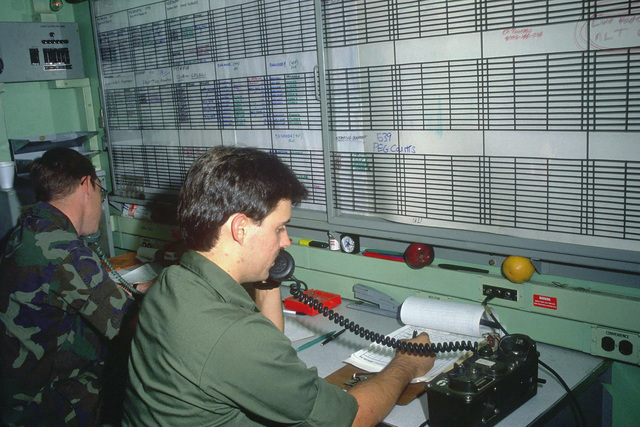Is your message really getting across? I ask this because I had a recent interaction with a team member of one of my clients that forced me to rethink how we communicate. This particular client is a 100% distributed company. If you are like me and that is a phrase you haven’t heard yet, it means they are 100% virtual with team members all over the world. They’ve engaged me as a FCOO to help streamline their operations and get everyone working together.
There’s a lot of talk now-a-days about managing remote teams, much of it is academic. My theory has been that it is virtually no different (do you like what I did there?) and this experience is validating the concept. While the tenants of sound and effective leadership haven’t changed, there are nuances that need to be tweaked or, at least, understood. Especially when it comes to communications. To solve the communication problem this company leverages technology, using a combination of Zoom, Slack, and email.
The problem became really apparent with one team member who, while brilliant in their field, also suffers from a social anxiety disorder. Imagine, for a second, that every time you met someone new, or you had to speak extemporaneously in a meeting with people you didn’t know very well, or even if you received a phone call and you had to talk one-on-one with someone, you suffered from severe anxiety. While I can’t truly know what that would be like, I can imagine how debilitating it might be.
Let People Communicate in Their Best Medium
One’s response to this kind of stress is naturally to communicate via the written word and they are big on long Slack messages. This is what I’m dealing with. I can’t meet, Zoom or huddle on Slack, with this person unless I want to lose their services for a couple of days while they recover from the anxiety. Now imagine this person is a brilliant strategist in your industry and they work for you or provide a service to you.
Writing, as I’ve found out, can be effective sometimes but communicating feeling, emotions, and nuances become more of a challenge. That’s why top novelists are so rare and so well rewarded. Great writers convey frustration, anger, joy, delight, mirth, the entire gambit of human emotions with the written word. It is a true gift, which this individual shares with great writers…and I don’t.
Oh sure, I can write OK. Well enough that I have held your attention over the years. I suspect that is more about the quality of my content rather than the prose with which I write. I’d much rather tell a story than write one. The problem with writing is that we are limiting the medium of communication to only one, the words themselves.
How We Convey and Receive Meaning
The specific problem is how to communicate my intent? Words can be sterile without the gift of prose. It is significantly more difficult to convey your emotional intent and that is what we, as humans, respond to first and foremost.
In a often quoted study published in 1967 in Volume 6 of The Journal of Personality and Social Psychologytitled Decoding of inconsistent communications, authors and Albert Mehrabian and Morton Wiener concluded that 55% of a message is delivered through facial expressions, 38% of the message comes from the tone of voice, and only 7% is based on the words actually spoken. While there is some debate over the methodology used to obtain these results what is clear is that part of how we interpret a message is based on non-verbal cues. When the non-verbal cues are aligned with the words, we listen to the words and when there is a disconnect, we disregard the words or interpret them negatively.
If you doubt me, just imagine getting a written message and all it says is “From Dave, call me”. Now compare that to a voice message that says in a clipped, staccato, and frenetic voice “this is Dave, call me!” or in a slow, unhurried, calm, southern draw “this is Dave, call me.” The written message, without any other clue, is subject to interpretation. The verbal messages leave little doubt as to their urgency. This is why actors will frequently view their scenes without sound. They are checking to ensure their body language and facial expressions match the emotion they are trying to connote.
Sometimes the Written Word is Misleading
By now you can see my problem. I need to make changes to the company and convey that these are necessary and ultimately in everyone’s best interest but I can’t have conversations with a key person, I’m constrained to writing and leaving things open to interpretation.
BTW, I see this frequently in another guise. Clients of mine, who are having problems with vendors, customers, or team members, want to address these problems solely in writing. It is a sad statement that the art of talking is dying. People have become afraid of confrontation so they avoid it with email, chat, or text. In doing this, they lose the opportunity to truly communicate their intent. While there are times where this might serve, when you experience a strong emotion like anger or frustration, it can also bight you in the tail.
I had a client who became frustrated with a client who didn’t understand the boundaries of the service they purchased. My client sat down to write an email. I said “pick up the phone!” He needed to both hear his client’s tone of voice as well as convey his frustration along with an honest desire to work it out. If he wrote an email, he risked it being interpreted by the mood of the client when they read it. If they had just had a fight with a friend, spouse, co-worker, etc. they may interpret the email negatively.
Get Your Point Across
So, what is the answer for my client’s team member with social anxiety? Simple, I started using voice chat, a feature of Slack. I respond to the long, well written, messages with a recording. This way they hear my tone of voice and my intentions. The turnaround is amazing and while we aren’t done, I can “hear” it in the tone of her writing…or is it just me interpreting things based on my emotional state.
How are you leveraging technology to solve your communication challenges? Let me know




